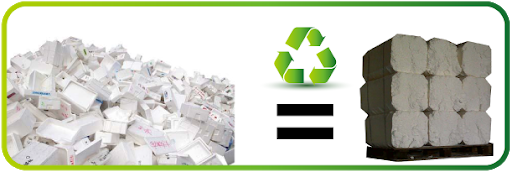EPS Waste
What is EPS Waste?
In What is EPS, it is known that the excellent properties of polystyrene foam (EPS) make it widely used in various fields of modern industry. More than 50% of the EPS is used in shock-absorbing packaging for electronic appliances, fish boxes, and agricultural products, which are discarded after one-time use. After finishing packaging missions, the EPS waste will be sent to landfills and then become a source of “White Pollution”.

EPS has a large volume and the accumulation of which will soon fill the storage space of the logistics warehouse, making high storage and transportation costs. Besides, the EPS waste is inflammable and explosive, causing potential safety hazards to the warehouse. Coupled with the diverse sources, the EPS waste has been a headache for many EPS producers/cutters, recyclers, retailers, fish marketers, etc., consequently, an one-stop EPS recycling solution is urgently needed for both economic development and environmental protection.
EPS Waste Recycling
INTCO Recycling provides a whole service chain to offer our customers polystyrene recycling solutions, sells the customized GREENMAX polystyrene recycling machine for a specific industry, and repurchases the compressed EPS blocks. After the customer compresses the EPS waste with the equipment, we will be responsible for arranging the transportation company and picking up the goods. For customers, this is a move that turns waste into treasure.

How to Reduce EPS Waste?
Reducing Use - It refers to reducing the consumption of natural resources. For this reason, the use of disposable products should be avoided, and the packaging design should be improved to reduce the use of polystyrene materials in order to reduce environmental costs and the load on the environment.
Utilizating of Waste - EPS packaging can be used multiple times, for example, to hold semi-manufactured products for internal transportation.
Reprocessing - Reprocessed Styrofoam into new materials, which can be used as substitutes for other materials. For example, it can replace solid wood for garden equipment; or slate for roofing; or be used to produce new plastic products such as hangers and CDs/video cassettes.
Recycling - Polystyrene has a higher calorific value than coal and can be incinerated in a thermal energy recovery system or equipped with appropriate pollution control equipment.
